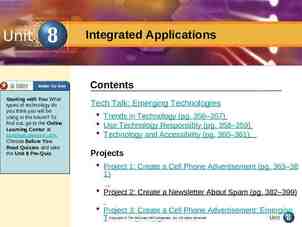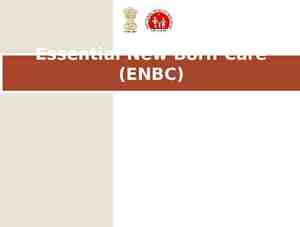Useful Tips for Federal Fiduciary Income Tax Returns Paul C. Hayes,
15 Slides77.54 KB
Useful Tips for Federal Fiduciary Income Tax Returns Paul C. Hayes, Esq. Kelly L. Caissie, Esq. Howard Mobley Hayes & Gontarek, PLLC Phone: 615-627-4444 [email protected] [email protected]
Overview Form 1041 – What is it? – Form 1041 is an income tax return for a trust or estate reporting income earned by the trust’s or estate’s assets – Income earned prior to a decedent’s date of death or prior to the creation of the trust is not reported on Form 1041 – Income earned by assets owned jointly with rights of survivorship or with pay on death designations are not reported on Form 1041 – Form 1041 should not be confused with Form 706, which is the federal estate tax return
Filing Requirements Estates: – Gross Income 600, or – Nonresident Alien Beneficiary Trusts: – Any taxable income, or – Gross income 600, or – Nonresident Alien Beneficiary
Types of Returns and When to File During the taxpayer’s lifetime: – Form 1040 (income tax return) – final individual income tax return due April 15 of the year following the taxpayer’s date of death Following the taxpayer’s death: – The taxpayer’s estate comes into existence when the taxpayer dies – Form 706 (estate tax return) is due 9 months after the taxpayer’s date of death (can request an automatic extension for an additional 6 months) – Form 1041 (estate/trust income tax return) For calendar year estates and trusts, due date is April 15 of the year following the taxpayer’s date of death For fiscal year estates, due date is the 15th day of the 4th month following the close of the fiscal tax year
Calendar Year vs. Fiscal Year Estates: Option to file Form 1041 based on calendar year end or fiscal year end – If the calendar year is chosen, first taxable year is decedent’s date of death through December 31 (Example: Date of death: June 10, 2016; First calendar year is June 10, 2016 – December 31, 2016) – An estate’s first fiscal year can be any period that ends on the last day of a month and does not exceed 12 months (Example: Date of death: June 10, 2016, Fiscal year: June 10, 2016 – May 31, 2017. Following fiscal year runs June 1, 2017 – May 31, 2018.) Trusts: Trusts are generally required to use the calendar year end – exception if trust coupled with estate via § 645 election
Section 645 Election The 645 election allows the income and expenses for a decedent’s revocable trust and estate to be reported on a single Form 1041 The election is made on the first timely-filed Form 1041 using Form 8855 The election is irrevocable once made Making the election can simplify the income and expense reporting requirements during the estate administration process, allow the decedent’s revocable trust to use the estate’s fiscal year, and provide better income and expense matching opportunities
Obtaining an EIN Income generated after a decedent’s date of death should no longer be attributed to the decedent’s social security number The decedent’s estate should obtain an EIN and all income generated after death should be reported under the EIN If the decedent had a revocable living trust that became irrevocable at death, an EIN may need to be obtained for the trust as well An EIN can be obtained online at the IRS website or by fax
Federal Tax Rates Capital gains and qualified dividends: – Income Tax Bracket Rate 0 – 15% then 0% 25% – 33% then 15% 39.6% then 20% Ordinary income: – Taxable income: 0 to 2,550 – Rate of 15% 2,551 to 5,950 – Rate of 25% 5,951 to 9,050 – Rate of 28% 9,051 to 12,400 – Rate of 33% 12,401 and greater – Rate of 39.6% Trust may elect to qualify distributions to beneficiaries within first 65 days following end of prior tax year as a deduction from taxable income – Compare marginal tax rate of recipient beneficiaries to marginal tax rate of trust
Income Interest/Dividends – Pre-date of death: report on decedent’s Final 1040 – Post-date of death: report on Form 1041 Capital Gains – The basis of property owned by a decedent or in a revocable living trust is adjusted to fair market value as of date of death, unless IRD property - accordingly, if property is sold shortly after the decedent’s death, there should be little gain or loss on the sale – Jointly-held assets will not receive a full basis adjustment, but the decedent’s half of such assets will be adjusted to fair market value Income in Respect of a Decedent (IRD) – Common examples: Retirement accounts such as IRAs, annuities – If the decedent’s estate/trust is named as the beneficiary of an IRD asset, distributions to the estate/trust are taxable as ordinary income in the year received Life Insurance – The proceeds from life insurance on the decedent’s life are excluded from gross income, with certain exceptions for transfers for value during insured’s lifetime. However, if a life insurance policy is payable to an estate or trust and there is interest paid on the proceeds, the interest portion must be reported on the estate/trust’s Form 1041
Deductions Unlike individuals, estates and trusts are not allowed a standard deduction Estates receive an exemption of 600; simple trusts receive a 300 exemption; and complex trusts receive a 100 exemption Most expenditures made by an estate or trust are deductible on Form 1041, including the following: – Interest – Taxes State and local income taxes OR state and local general sales taxes, but not both State, local, and foreign real property taxes State and local personal property taxes Can’t deduct: federal income taxes, estate/gift taxes, or excise taxes – Fiduciary fees – Charitable deduction – must be provided for under terms of will or trust agreement and payment must be made from gross income to be deductible – Attorney/accountant fees – Income Distribution Deduction – if an estate or trust makes distributions to beneficiaries during the tax year, the income earned by the estate or trust can be distributed to the beneficiaries on a Schedule K-1 to claim on their personal income tax returns to the extent of the distributions made, and the estate/trust can deduct the amount of such distributions Some expenditures are subject to a 2% of AGI floor
Deductions Non-deductible expenditures include: – Any expense already deducted on Form 706 – Funeral expenses (these may only be deducted on Form 706, if filing) – Medical expenses incurred by the decedent prior to death but paid by the estate or trust after the date of death (these may be deducted on the Form 706, if filing, or on the decedent’s final individual Form 1040) – Expenses allocable to tax exempt income
Simple vs. Complex Trusts Simple Trust – Trust that is required to distribute all of its accounting income. Actual distribution of income not relevant – Makes no charitable contributions – No distributions out of corpus Complex Trust – Any trust that is not a simple trust (i.e., distribution of income is discretionary, charity is a beneficiary, or principal distributions are made)
Grantor Trust Grantor trusts – inter vivos trusts treated as owned by the grantor for income tax purposes Examples: – Revocable living trust – Intentionally defective grantor trust (IDGT) Grantor trust may obtain its own EIN or provide the Grantor’s social security number – If EIN obtained, Form 1041 is filed with a “grantor trust letter” issued that allocates all income to the grantor All trust income is reported on the grantor’s income tax return (regardless of whether the income is distributed to the grantor or whether the grantor is even a beneficiary of the trust)
Net Investment Income Tax (Medicare Surtax) The tax went into effect in 2013 3.8% tax on the lesser of (1) undistributed “net investment income” for the tax year, or (2) the excess of adjusted gross income for the tax year, over the dollar amount at which the highest tax bracket begins for the tax year ( 12,400 for 2016) “Net investment income” includes interest, dividends, rents, royalties, net capital gain derived from the disposition of property (other than property held in a trade or business), and income from passive trade or business activities The threshold for payment of the net investment income tax is much lower for estate/trusts than it is for individuals – whereas estates/trusts owe the tax on net investment income over 12,400 (in 2016), the individual threshold is 200,000 for individuals, 250,000 for married couples filing jointly, and 125,000 for married couples filing separately The net investment income tax is computed using Form 8960 and the tax is reported on Form 1041, Schedule G, line 4
Estimated Tax Payments Estates: – Estimated tax payments are not required for first two tax years – Quarterly estimated tax payments due beginning with the third tax year, unless no tax due for prior tax year that was 12 months Trusts: – Quarterly estimated tax payments due quarterly, unless not tax due for prior tax year that was 12 months Amount: – Smaller of: 90% of the tax shown on the current year tax return, or The tax shown on the prior year tax return (110% of that amount if the estate’s or trust’s adjusted gross income (AGI) on that return is more than 150,000




















